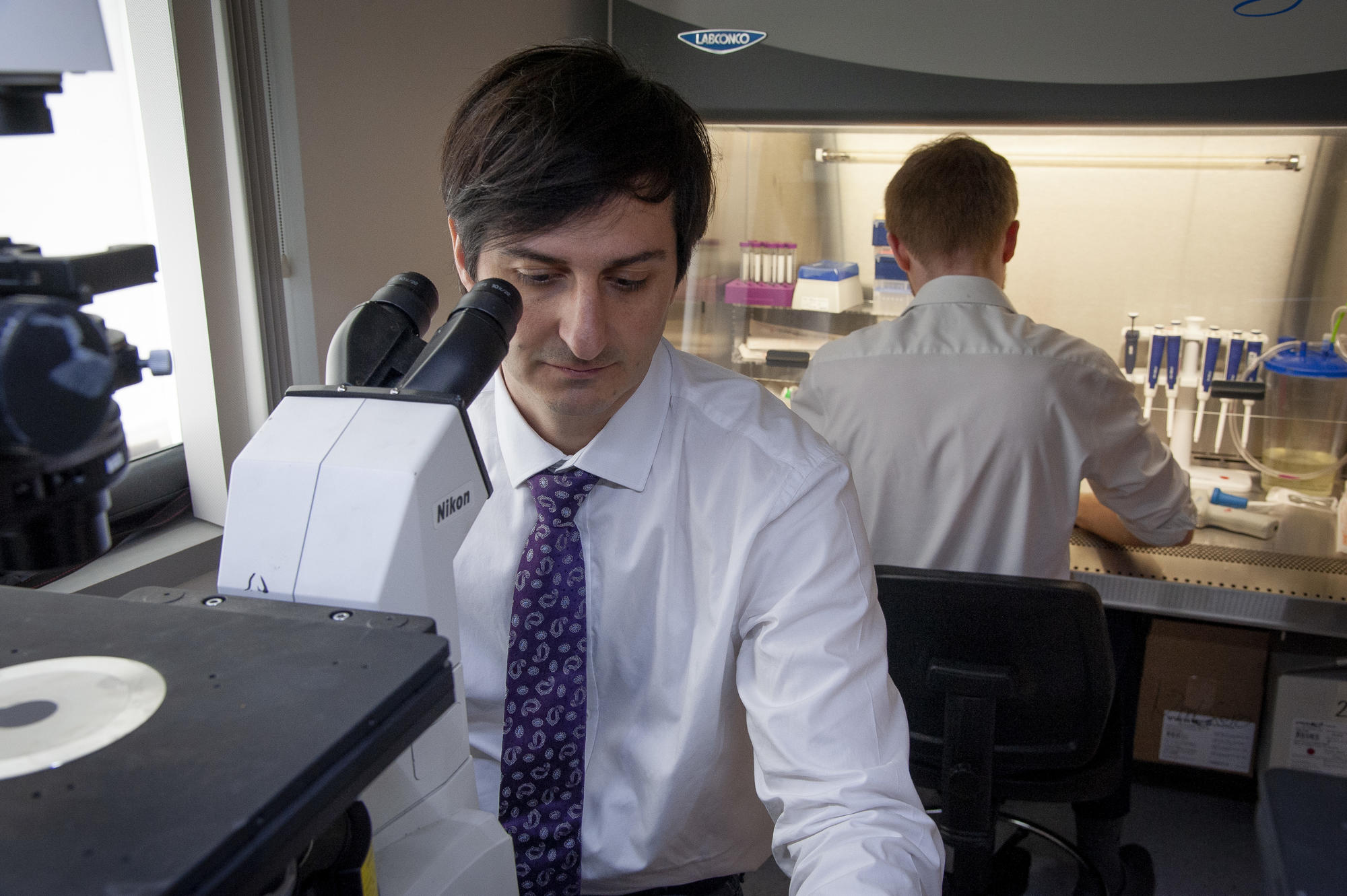
In a study recently published in Nature, a team of Boston Children’s Hospital and Mass. Eye and Ear investigators including Artur A. Indzhykulian, MD, PhD, discovered that the coat protein of hair-cell stereocilia, known as Polycystic Kidney and Hepatic Disease 1-Like 1 (PKHD1L1), is required for normal hearing in mice. The bundle of stereocilia on inner ear hair cells responds to subnanometer deflections produced by sound or head movement. Stereocilia are interconnected by a variety of links and also carry an electron-dense surface coat. This coat may contribute to stereocilia adhesion or protect from stereocilia fusion, but its molecular identity remains unknown.
From a database of hair-cell-enriched translated proteins, the investigators identified PKHD1L1, a large, mostly extracellular protein. Using serial immunogold scanning electron microscopy, they showed that PKHD1L1 is expressed at the tips of stereocilia, especially in the high-frequency regions of the cochlea. PKHD1L1-deficient mice lacked the surface coat at the upper but not lower regions of stereocilia, and developed progressive hearing loss. Therefore, the investigators concluded that PKHD1L1 is a component of the surface coat and is required for normal hearing in mice.
